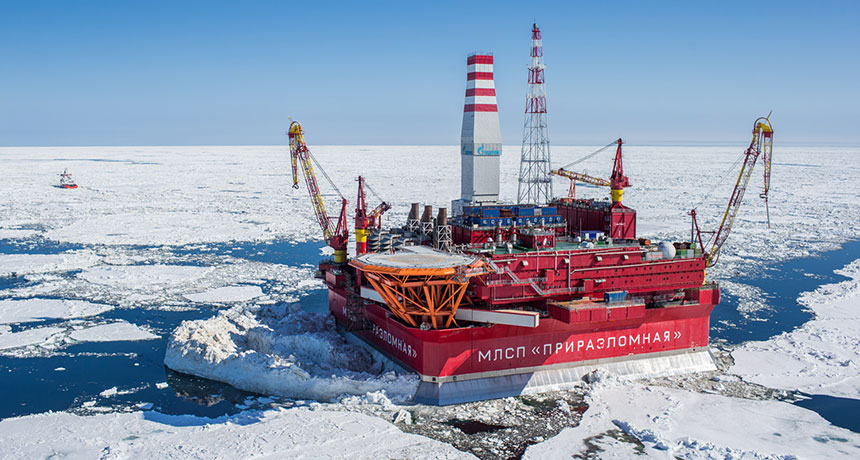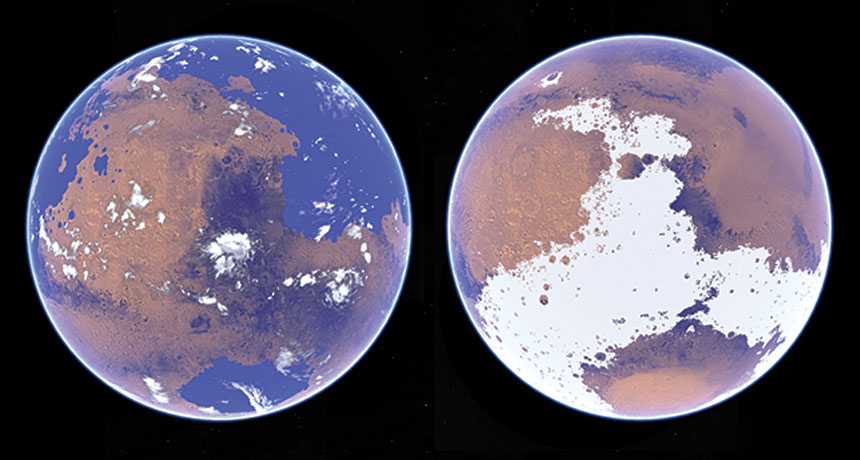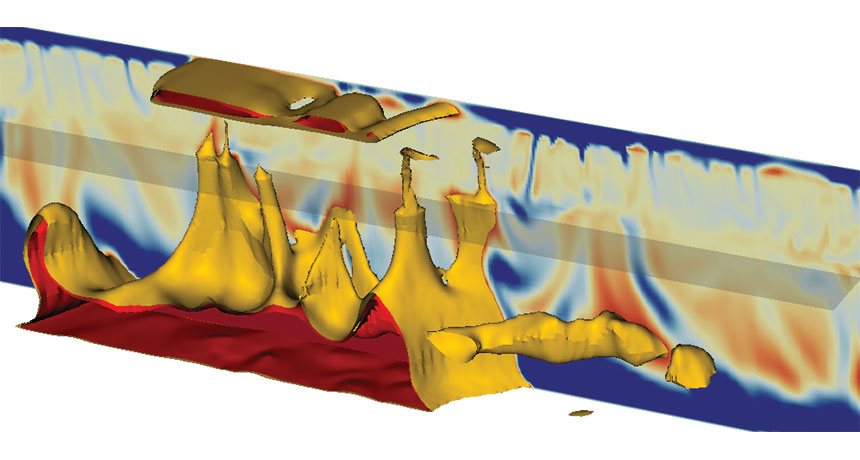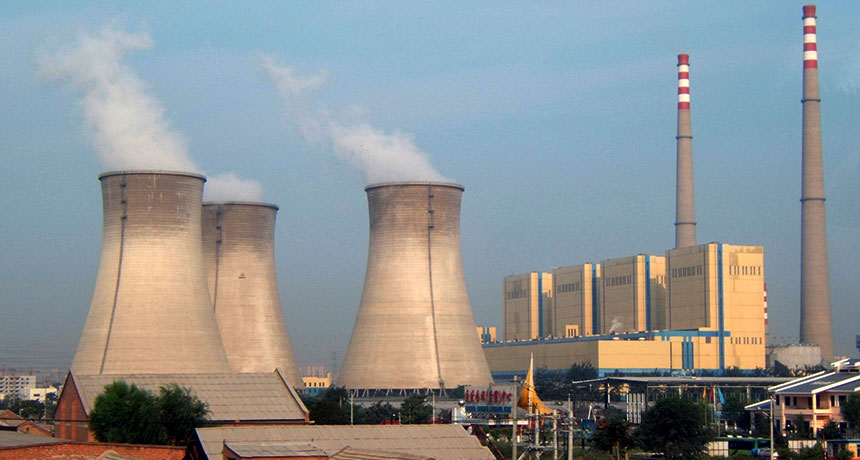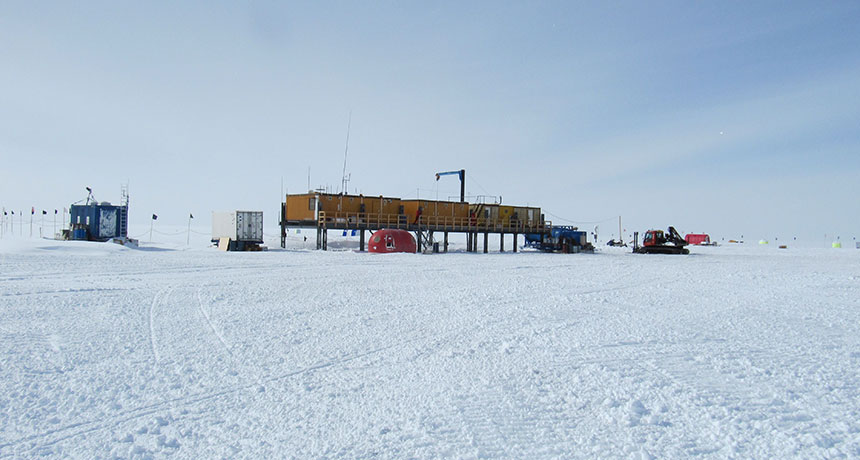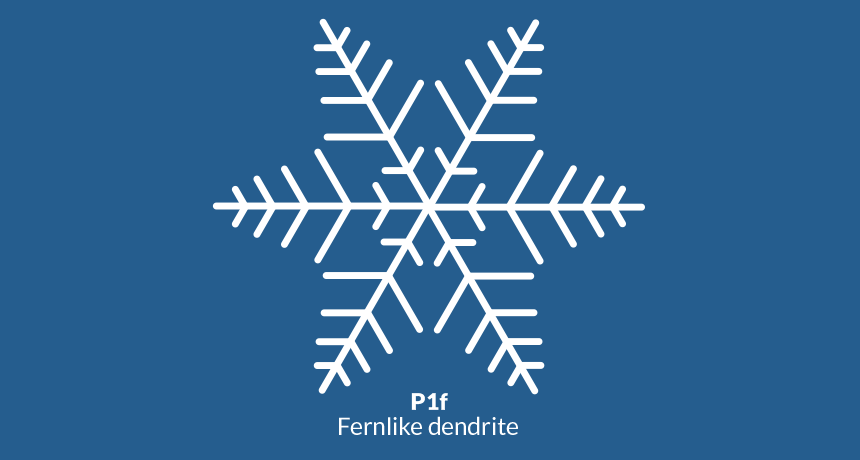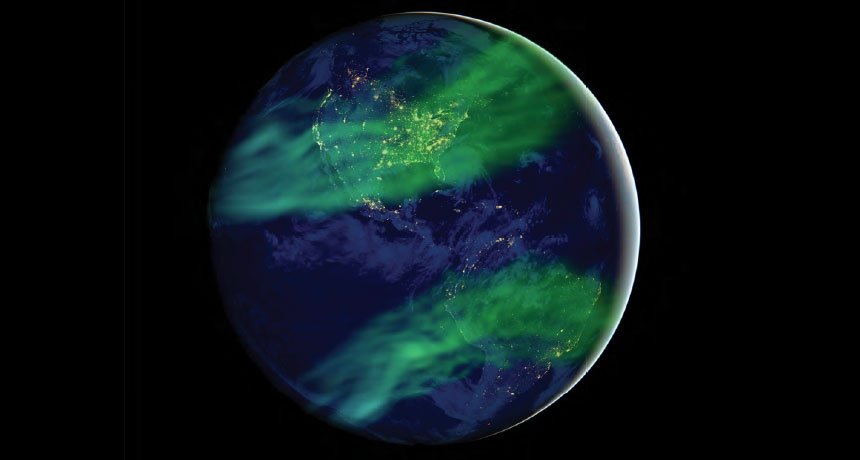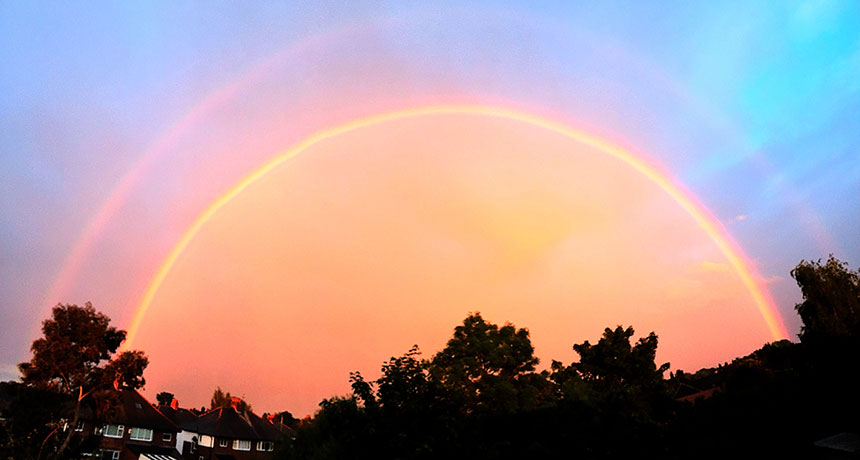
Why some rainbows are all red
Science News, December 2015Some rainbows don’t contain all the colors of the rainbow. The height of the sun above the horizon can yield arcs that contain only a fraction of the traditional ROYGBIV, researchers reported December 17 at the American Geophysical Union’s fall meeting.
Adapted for Science News for Students.

